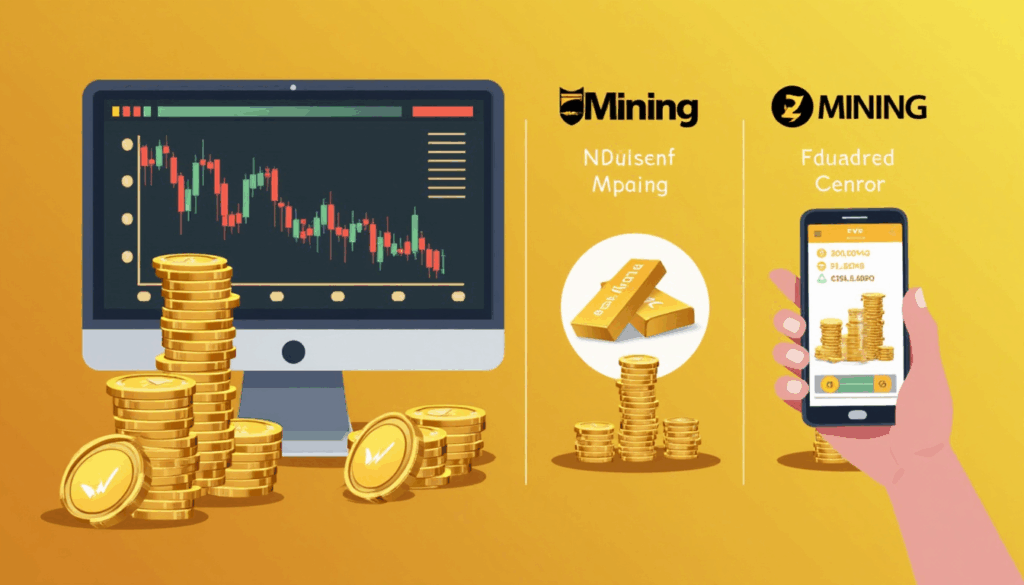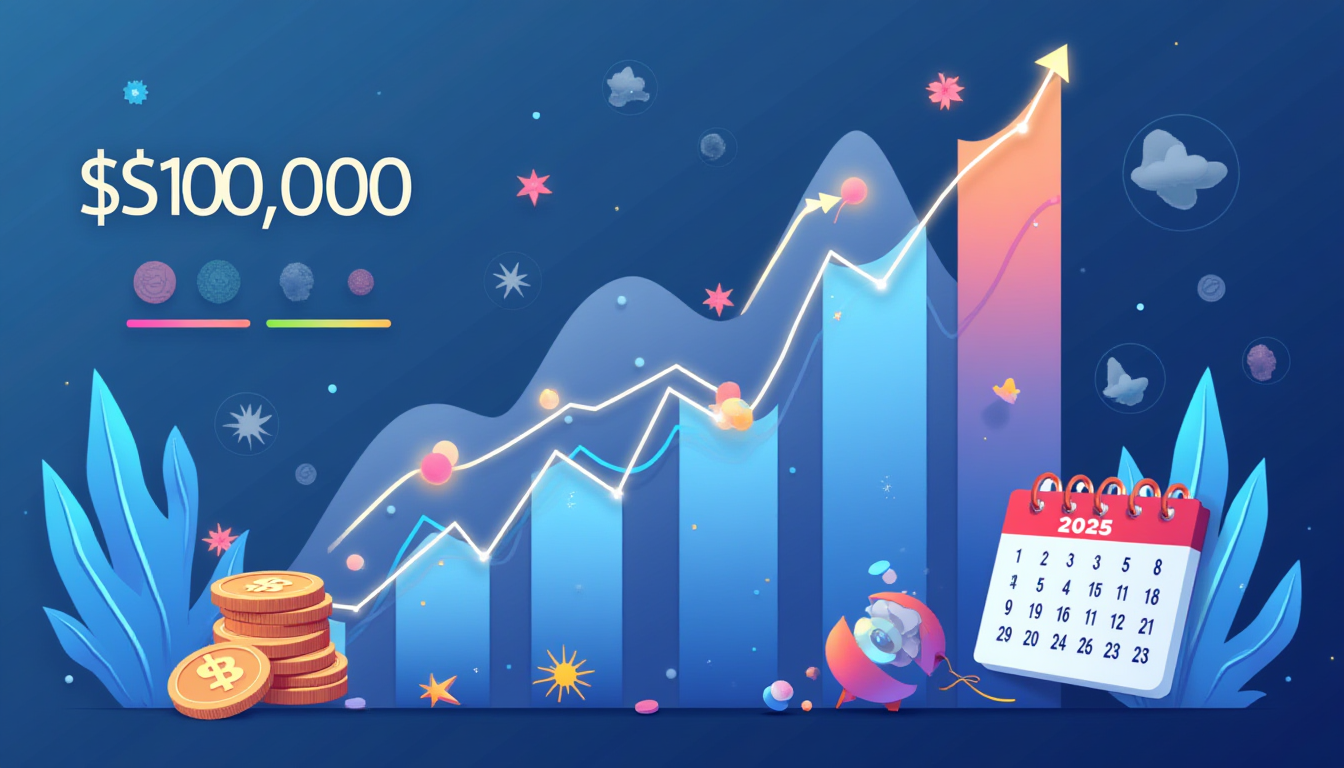In the ever-evolving financial landscape of 2025, investors are increasingly turning to tangible assets as a means of protecting wealth, hedging against inflation, and diversifying their portfolios. Amid rising geopolitical tensions, fluctuating currencies, and unpredictable monetary policies, gold, silver, and broader commodities have re-emerged as critical components of a resilient investment strategy. Whether you’re a seasoned investor or just beginning your journey into alternative assets, understanding how to effectively invest in precious metals and commodities is essential for long-term financial security.
This comprehensive guide explores the most effective ways to invest in gold, silver, and other commodities in 2025. We’ll break down the different investment vehicles, analyze current market conditions, discuss safe storage solutions, and examine digital innovations that are transforming the way people buy and trade physical assets. By the end of this article, you’ll have a clear roadmap for building a diversified, inflation-resistant portfolio using precious metals and commodities.
Table of Contents
Why Gold, Silver, and Commodities Matter in 2025
In 2025, the global economy continues to navigate the aftermath of post-pandemic monetary policies, persistent inflation, and heightened geopolitical uncertainty. Central banks around the world are adjusting interest rates and reevaluating quantitative easing programs, creating volatility in traditional financial markets. In this environment, gold and silver stand out as time-tested safe-haven assets—tangible stores of value that historically retain purchasing power during periods of economic stress.
Gold, in particular, has maintained its role as a global monetary reserve asset. Many central banks, especially in emerging markets, have been actively increasing their gold reserves as a hedge against currency devaluation and geopolitical risk. According to the World Gold Council, central bank gold purchases reached record levels in 2023 and remained strong into 2024 and 2025, signaling growing institutional confidence in gold as a strategic reserve.
Silver, while often overshadowed by gold, offers a unique dual role as both a precious metal and an industrial commodity. Its widespread use in solar panels, electric vehicles, medical devices, and electronics has driven steady demand growth. As the global push toward clean energy intensifies, silver’s industrial applications are expected to boost its long-term value proposition.
Beyond precious metals, broader commodity markets—including energy (oil, natural gas), agricultural products (wheat, corn, coffee), and industrial metals (copper, aluminum, lithium)—are also gaining attention. These assets are deeply tied to global economic activity, supply chain dynamics, and climate change initiatives. In 2025, the transition to renewable energy is reshaping demand patterns, reducing reliance on fossil fuels while increasing demand for battery metals like lithium, cobalt, and nickel.
Commodities, by nature, are cyclical and influenced by a complex web of factors:
- Supply and demand imbalances
- Weather patterns affecting crop yields
- Geopolitical disruptions in key producing regions
- Technological innovation driving new uses
- Monetary policy and currency fluctuations
Understanding these dynamics allows investors to anticipate price movements and position themselves strategically in the market.
Different Ways to Invest in Gold and Silver in 2025
There is no one-size-fits-all approach to investing in precious metals. The best method depends on your financial goals, risk tolerance, liquidity needs, and level of involvement. Here are the primary ways to gain exposure to gold and silver in 2025:
1. Physical Ownership: Bullion, Coins, and Bars
Buying physical gold and silver remains one of the most direct and secure methods of ownership. Investors who value control and tangibility often prefer holding actual metal in the form of:
- Gold and silver bars (from 1 gram to 1 kilogram)
- Bullion coins (e.g., American Eagle, Canadian Maple Leaf, Austrian Philharmonic)
- Jewelry and collectibles (though these often carry higher premiums and lower liquidity)
Pros:
- Full ownership of a tangible asset
- No counterparty risk
- Protection against systemic financial collapse
Cons:
- Requires secure storage and insurance
- Premiums above spot price
- Less liquid than other investment forms
When purchasing physical metals, it’s crucial to buy from reputable dealers or government mints that provide certification of purity and weight. Look for products with recognized hallmarks and avoid unverified sellers or high-premium collectibles unless you’re a numismatic investor.
2. Gold and Silver ETFs (Exchange-Traded Funds)
For investors seeking liquidity and ease of access, ETFs offer a convenient way to gain exposure to precious metals without handling physical assets. These funds trade on major stock exchanges and are designed to track the price of gold or silver.
Popular options include:
- SPDR Gold Shares (GLD) – Tracks the price of gold and holds physical bullion in secure vaults.
- iShares Silver Trust (SLV) – Provides exposure to silver prices with similar structure.
Pros:
- Highly liquid and tradable like stocks
- No storage or insurance concerns
- Transparent pricing and low management fees
Cons:
- Does not confer direct ownership of physical metal
- Subject to counterparty risk (though minimal with reputable ETFs)
- May not perform exactly in line with spot prices due to tracking errors
In 2025, many ETFs are also incorporating ESG (Environmental, Social, and Governance) criteria, appealing to socially conscious investors who want sustainable exposure to precious metals.
3. Mining Stocks and Mutual Funds
Investing in companies that mine gold and silver offers indirect exposure to metal prices, combined with the potential for capital appreciation and dividends.
Examples include:
- Newmont Corporation (NEM)
- Barrick Gold (GOLD)
- Franco-Nevada (FNV) – A gold royalty company with diversified exposure
Pros:
- Potential for higher returns than physical metals
- Dividend income from profitable operations
- Diversification across multiple mines and regions
Cons:
- Subject to company-specific risks (management, operational issues, geopolitical exposure)
- Stock prices may not always correlate directly with metal prices
- More volatile than holding physical gold or ETFs
Mutual funds and ETFs focused on mining equities—such as the VanEck Gold Miners ETF (GDX)—allow investors to diversify across multiple companies, reducing single-stock risk.
4. Futures and Options Contracts
Futures and options are derivative instruments that allow investors to speculate on or hedge against future price movements in gold and silver. These are typically used by experienced traders due to their complexity and leverage.
Pros:
- High leverage potential
- Useful for hedging existing positions
- Can profit in both rising and falling markets
Cons:
- High risk due to leverage
- Requires deep market knowledge
- Not suitable for long-term buy-and-hold investors
In 2025, retail access to derivatives has expanded through online brokers, but these instruments should be approached with caution, especially by beginners.
5. Digital Gold and Silver Tokens (Blockchain-Based Assets)
One of the most innovative developments in 2025 is the rise of digital precious metal tokens. These blockchain-based assets are backed by physical gold or silver stored in secure vaults and allow for fractional ownership, instant transfers, and transparent verification.
Platforms like PAX Gold (PAXG) and Tether Gold (XAUT) issue tokens where each unit represents a specific amount of gold (e.g., 1 PAXG = 1 troy ounce of gold). These tokens can be bought, sold, and transferred on cryptocurrency exchanges or digital wallets.
Pros:
- Fractional ownership (as little as 0.001 oz of gold)
- Instant settlement and global transferability
- Immutable ownership records via blockchain
- Lower transaction fees compared to traditional methods
Cons:
- Dependent on platform security and custodial integrity
- Regulatory uncertainty in some jurisdictions
- Requires basic understanding of digital wallets and crypto infrastructure
Digital tokens represent a bridge between traditional finance and the decentralized future, offering a modern, efficient way to invest in precious metals.

Market Conditions for Precious Metals in 2025
To make informed investment decisions, it’s essential to understand the macroeconomic forces shaping the gold and silver markets in 2025.
Inflation and Interest Rates
Inflation remains a key driver of gold demand. When fiat currencies lose purchasing power, investors turn to gold as a store of value. Despite central banks tightening monetary policy in 2023–2024, inflation in major economies has remained above target levels due to supply chain disruptions, energy costs, and wage pressures.
Gold typically performs well in high-inflation environments, especially when real interest rates (nominal rates minus inflation) are negative or low. In 2025, if central banks pause rate hikes or begin cutting rates to stimulate growth, gold could see renewed upward momentum.
Silver, while also an inflation hedge, is more sensitive to industrial demand. Its price tends to be more volatile than gold due to its dual role as both a monetary and industrial metal.
Currency Fluctuations
Gold is priced in U.S. dollars globally, making it inversely correlated with the strength of the dollar. A weaker dollar makes gold cheaper for foreign buyers, increasing demand and pushing prices higher. Conversely, a strong dollar can suppress gold prices.
In 2025, with the U.S. Federal Reserve potentially shifting toward a more accommodative stance, the dollar may weaken, providing a tailwind for gold and silver.
Geopolitical Risks
Ongoing conflicts, trade tensions, and political instability continue to drive demand for safe-haven assets. In 2025, risks in regions like Eastern Europe, the Middle East, and the South China Sea are keeping investors on edge. During times of crisis, capital flows into gold as a reliable store of value.
Supply and Demand Dynamics
On the supply side, gold mining output has been relatively flat in recent years due to declining ore grades and environmental regulations. Recycling contributes to supply but cannot fully offset production challenges.
Silver faces a different dynamic: while mined as a byproduct of other metals (like lead and zinc), its industrial demand is growing rapidly. Analysts project a structural deficit in silver supply by 2026, which could support higher prices.

Investing in Commodities Beyond Gold and Silver
While precious metals dominate the conversation, a well-rounded commodities strategy includes exposure to energy, agriculture, and industrial metals.
Energy Commodities
Oil and natural gas remain critical despite the global shift toward renewables. In 2025, geopolitical tensions and OPEC+ production decisions continue to influence prices. However, long-term trends favor reduced fossil fuel dependence.
Meanwhile, uranium has emerged as a dark horse commodity, with renewed interest in nuclear energy as a low-carbon power source. Uranium ETFs like URNM and mining stocks are gaining traction among forward-thinking investors.
Agricultural Commodities
Food security is a growing concern in 2025 due to climate change, population growth, and trade restrictions. Key agricultural commodities include:
- Wheat, corn, soybeans – affected by weather, droughts, and export policies
- Coffee, cocoa, sugar – subject to supply shocks and labor issues
Investors can gain exposure through futures contracts, commodity ETFs (e.g., DBA – Invesco Agriculture Fund), or agribusiness stocks.
Industrial and Battery Metals
The clean energy revolution is fueling demand for metals essential to batteries, electric vehicles, and renewable infrastructure:
- Lithium – Key for lithium-ion batteries
- Cobalt and Nickel – Used in battery cathodes
- Copper – Essential for electrical wiring and EVs
These metals are often referred to as “green metals” and are expected to see strong demand growth through 2030 and beyond.
How to Buy and Store Physical Metals Safely
If you choose to invest in physical gold or silver, proper purchasing and storage are critical.
Buying Tips
- Purchase from reputable dealers with verifiable credentials (e.g., A-Mark, JM Bullion, Kitco)
- Look for certified products with assay cards or government backing
- Compare premiums over spot price—avoid overpaying for collectible or rare coins unless that’s your goal
Storage Options
- Home Storage
- Pros: Immediate access, no fees
- Cons: Risk of theft, lack of insurance, potential damage
- Bank Safe Deposit Boxes
- Pros: Secure, private, low cost
- Cons: Not insured by FDIC, limited access hours, may not be covered in bank insurance
- Professional Vault Storage
- Offered by companies like Brinks, Loomis, or specialized precious metals custodians
- Fully insured, climate-controlled, and audited
- Supports allocated storage (your specific bars/coins are held for you) vs. unallocated (pooled, less secure)
- Insured Digital Vaults with Blockchain Tracking
- Emerging in 2025 as a hybrid solution
- Combine physical storage with digital ownership verification
- Platforms like Goldmoney or Kinesis offer real-time tracking and redemption options
Always opt for allocated, insured storage if holding significant amounts of metal.

ETFs and Digital Commodities Platforms: The Future of Access
For investors who prioritize convenience, liquidity, and transparency, ETFs and digital platforms are leading the way in 2025.
Top Gold and Silver ETFs
- GLD (SPDR Gold Trust) – Largest gold ETF, holds physical gold
- IAU (iShares Gold Trust) – Lower expense ratio than GLD
- SLV (iShares Silver Trust) – Direct silver exposure
- SGOL (Aberdeen Standard Physical Gold Shares) – Stored in Swiss vaults
Digital Commodities Platforms
- Paxos Gold (PAXG) – 1 token = 1 oz of gold, redeemable
- Tether Gold (XAUT) – Issued by Tether, backed by London Good Delivery gold
- Kinesis Money – Offers spendable gold and silver accounts with debit cards
- OneGold – Combines physical storage with digital trading
These platforms are ideal for investors who want the benefits of physical metal without the hassle of storage. They also enable fractional investing, allowing you to start with as little as $10.
When choosing a digital platform, evaluate:
- Custodial security (who holds the metal?)
- Audit frequency and transparency
- Regulatory compliance (licensed by FINMA, FCA, etc.)
- Redemption options (can you take physical delivery?)
FAQ: Your Questions About Investing in Gold and Commodities in 2025
Is gold still a good investment in 2025?
Yes. Gold remains a proven hedge against inflation, currency devaluation, and geopolitical risk. With central banks still buying and global uncertainties rising, gold continues to play a vital role in diversified portfolios.
Should I buy physical gold or a gold ETF?
It depends on your goals. Physical gold offers full ownership and security in crises, but requires storage. ETFs like GLD are more liquid and easier to trade, but you don’t own the metal directly. Many investors use a combination of both.
How much of my portfolio should be in gold?
Most financial advisors recommend 5% to 10% allocation to gold or precious metals for diversification. Conservative investors or those in high-inflation countries may go higher.
Is silver a better investment than gold?
Silver is more volatile but has higher growth potential due to industrial demand. It’s cheaper per ounce, allowing for larger positions. However, gold is more stable and reliable as a long-term store of value.
Can I lose money investing in commodities?
Yes. Commodities are cyclical and can be highly volatile. Prices are influenced by unpredictable factors like weather, politics, and technological change. Always diversify and avoid overexposure.
Are digital gold tokens safe?
Reputable platforms like PAXG and XAUT are backed by audited physical gold and offer transparency. However, they depend on the platform’s integrity and cybersecurity. Stick to well-established, regulated providers.
What’s the best way for beginners to start?
Beginners should start small with a gold or silver ETF, or use a digital platform like OneGold or Kinesis. Learn the market, then consider adding physical metals or mining stocks as you gain experience.
Will gold prices go up in 2025?
While no one can predict exact prices, favorable conditions—persistent inflation, rate cuts, geopolitical tensions, and central bank demand—suggest strong support for gold. Many analysts project gold could reach $2,500–$3,000 per ounce in the next few years.
Conclusion
Investing in gold, silver, and commodities in 2025 is not just about preserving wealth—it’s about positioning yourself for resilience in an uncertain world. Whether you’re protecting against inflation, diversifying your portfolio, or capitalizing on the green energy revolution, precious metals and commodities offer unique opportunities that traditional stocks and bonds cannot match.
From physical bullion to digital tokens, from ETFs to mining stocks, there are multiple pathways to gain exposure. The key is to align your investment method with your goals, risk tolerance, and lifestyle. Prioritize security, transparency, and long-term thinking.
As the global economy continues to evolve, the timeless value of tangible assets remains unchanged. By understanding the forces that drive commodity markets and leveraging modern investment tools, you can build a robust, future-proof portfolio that stands the test of time.
Now is the time to take control of your financial future—start your journey into gold and commodities today.



